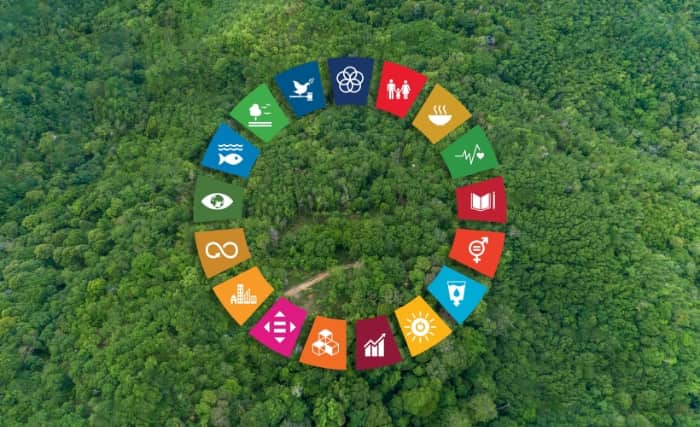
Few shifts in the business world are as urgent as the shift towards a circular economy. Linear take-make-dispose models tie up capital in materials that end up as cost. On the other hand, a circular economy keeps resources circulating, which turns potential liabilities into long-term value. It’s not an ideological shift per se, but more of a focused approach to business processes that cut risk while making your business more resilient.
That said, some firms still treat sustainability as an add-on rather than the core of operational design. You might see a glossy report or recycling bins in the office, but rising material prices, volatile energy costs, and tightening regulations are still eroding margins. More so than ever, we’re seeing clients, investors, and staff look for proof of sustainable business practice, rather than empty platitudes. So the question is, are your business processes fit for a world that rewards reducing waste and sustainable growth?
Measure Your Material and Energy Flows
You cannot improve what you do not measure. A fast but thorough audit reveals where virgin inputs enter, where value-leaking scrap exits, and where high-impact activities sit. Most of the time, you can use standard process-mapping tools combined with life-cycle thinking. At this stage, you can park the word ‘recycling’.
A circular economy thrives on eliminating waste at the design stage, not fixing it downstream. If you focus on preventing off-cuts, doubling asset life, and specifying inputs that are themselves recycled, then the onus to recycle your waste becomes less intense.

Align Procurement with Sustainable Business Outcomes
There are a few ways you can do this. Think about inviting suppliers to share data on their own footprints, repair services, and take-back schemes. Then, you can turn these expectations into contracts alongside price and delivery.
You might find that this upstream leverage unlocks more collaborative innovations like modular components, refillable packaging, and shared transport fleets. Each change looks small, but that’s the point. They aren’t’ big changes for your company, but together they hard-wire reducing waste into the fabric of your business processes.
Remove Steps that Don’t Add Value
In a circular economy context, that means questioning why an input must be new each time, why a product cannot be upgraded rather than replaced, and why by-products are not seen as feedstock for another revenue line. Cross-functional workshops are also a great way to reveal natural synergies that might have been hidden. For example, heat from one line could dry material for another, or maybe pallets could be shared with a neighbouring firm.
Digitalise for Transparency
Digital tools turn these ideas into dependable routines. Track-and-trace systems give every batch an identity, making reverse logistics transparent. If you get ahead of the trend, then predictive analytics are also able to schedule maintenance before equipment breakdowns, stretching the life of your kit.
Wherever you can, it’s a good idea to integrate tools like this into existing enterprise resource planning rather than building isolated dashboards. Keeping data easily available speeds up decisions and reduces the overhead of manual reconciliation.
Equip and Reward People
People make the system live. Take the time and invest in your teams with the skills and authority to challenge old habits. It might mean incentivising designers to minimise material diversity, buyers to source secondary inputs, and operations staff to monitor yield far beyond traditional scrap rates. Storytelling matters too. Celebrate early wins that showcase reducing waste alongside cost savings. When colleagues see practical outcomes rather than lofty slogans, momentum builds.

Keep Finance in the Loop
Finance leaders must also tune their metrics. Traditional cost accounting often hides the value gained from extending asset life or recovering components. What matters in a circular economy is the total cost of ownership and material flow cost. Accounting for these exposes the real pay-back of sustainable business investments. Capital expenditure that once looked marginal can show attractive returns once disposal fees, downtime, and reputational risk are all counted in.
Sustainability Can Give You a Market Edge
It’s not news to say that markets usually reward early movers. In the UK, lots of public-sector tenders now score circular criteria alongside price. Private buyers question upstream waste even if their final product isn’t necessarily a tangible one. By optimising business processes today, you can position yourself as a partner who de-risks the supply chain. That translates directly into contract wins and investor confidence.
Build Momentum Through Quick Wins
When you’re starting out, it’s good to prioritise quick wins that free cash for bigger shifts. Classic examples might be refurbishing tooling rather than replacing it, installing smart sensors to cut energy peaks, or redesigning packaging to fit more units per pallet. Each saves money and demonstrates tangible progress, which can build belief within your team. Use the cash to fund longer-horizon moves such as closed-loop supply chains or product-as-a-service models. A circular economy journey is iterative; each success funds the next step.
Ready to Make Your Operations Circular?
With thirty years of hands-on experience in manufacturing, supply chain, and process redesign, my approach blends lean rigour with pragmatic sustainable business insights. It’s a tried and tested way of helping organisations, large and small, cut costs while reducing waste across their business processes.
If you want tailored guidance on embedding the circular economy into every stage of your operation, I’m here to help. Find out more about my services here or get in touch with any questions.
FAQs
What is the difference between recycling and circular design?
Recycling treats waste after it occurs; circular design prevents waste by keeping materials and products in use for longer.
How quickly can a medium-sized firm see financial returns?
Many efficiency measures pay back within a year, while larger system changes often break even within three to five years.
Is a circular approach relevant to service-based companies?
Yes. Services rely on equipment, energy, and data; lowering material and energy intensity benefits their margins and reputation.
Does embracing circularity limit growth?
No. It decouples growth from resource use, allowing revenue to rise without proportionally higher material costs or emissions.
Can circular initiatives improve talent retention?
Employees increasingly value purposeful work. Demonstrating genuine progress on sustainability boosts engagement and retention.

Further Reading
- How Digital Transformation Can Enhance Lead Generation
- Adapting to Remote and Hybrid Work Models in B2B Sales
- How Simplifying Your Business Processes Can Boost Growth
- Using Non-Executive Directors to Improve Risk Management
